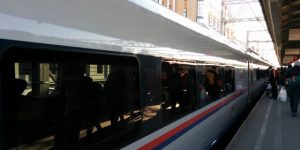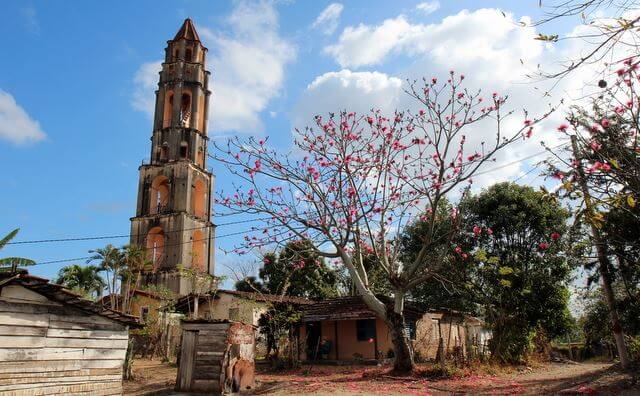
The Valley de los Ingenios watchtower, and a slave quarters
The collapse of the Cuban economy, and the implementation of food rationing, came about after the dissolution of the Soviet Union in the early 1990’s. To aid Cuba, the Soviets had been purchasing Cuban sugar at way above market prices. As the Soviet Union split up they stopped buying the sugar, which had been Cuba’s primary source of income.
Close to Trinidad is Valle de los Ingenios, or Valley of the Sugar Mills. After the sugar trade took off during the 18th century, huge plantations were developed throughout the valley. Most of these have since fallen into disrepair, but UNESCO money has preserved one of the largest.
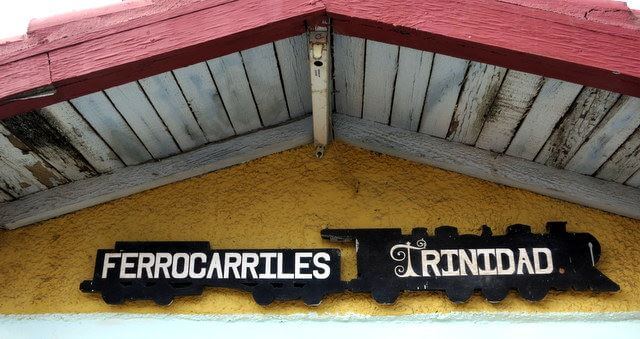
The railway station building in Trinidad
Getting to the Sugar Mills
Helpfully there’s a daily steam train out to Valle de los Ingenios. It leaves town at 9.30, so we walked down to the station for 9am, to ensure we got our tickets.
The tiny ticket office didn’t open until 9.15, so we waited on the huge platform. Judging by the size of the platform this may once have been a hugely popular rail line, but today there were just seven people waiting. Us two, a sunbeaten man with a chicken, a young Cuban couple and two elderly Canadian ladies, looking very lost.
At 9.15 the ticket office opened. Nobody else moved so I went in first to buy some tickets, only to be told there was no train.
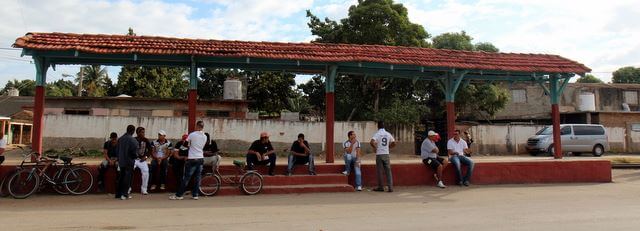
A few more people arrive at the railway platform in Trinidad
On asking why, she just waved at the empty platform – I guess it’s not worth running for 7 people. If it was more reliable, more people might take it, making it more profitable, but never mind.
We roped in the Canadian ladies and flagged down a taxi. The train is $10 per person, but a return trip in the taxi for 4 was only $20 all in. Similarly the train takes an hour to get there, but 15 minutes later the taxi had arrived at the sugar cane plantation.
Valle de los Ingenios
The plantation of sugar magnate Manaca Iznage has been restored, including the main house, the slave quarters (called barracones) and a 45m high tower.
Various tales surround the purpose of the tower. The bell was used to announce the beginning and end of the work day, possibly the thrice-a-day prayer times and a fire alarm. It may also have been a watch tower, to spy on escaping slaves and the bell could warm the guards. The bell has since been removed and sits outside the entrance to the main house.
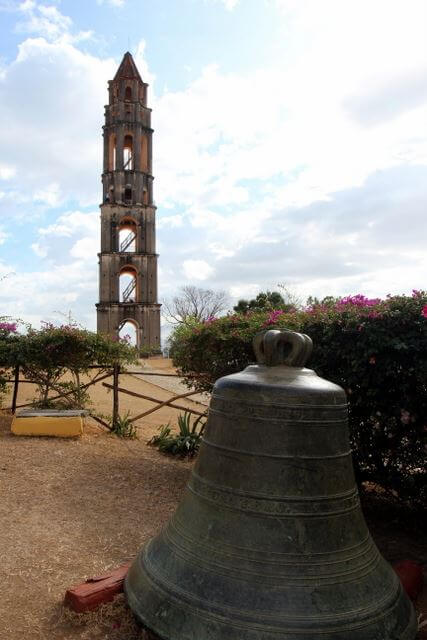
The bell from the Valley de los Ingenios tower
I’d expected the main house to be more of a museum, but it’s really just an uninspired fixed-price restaurant and an equally unappealing gift shop.
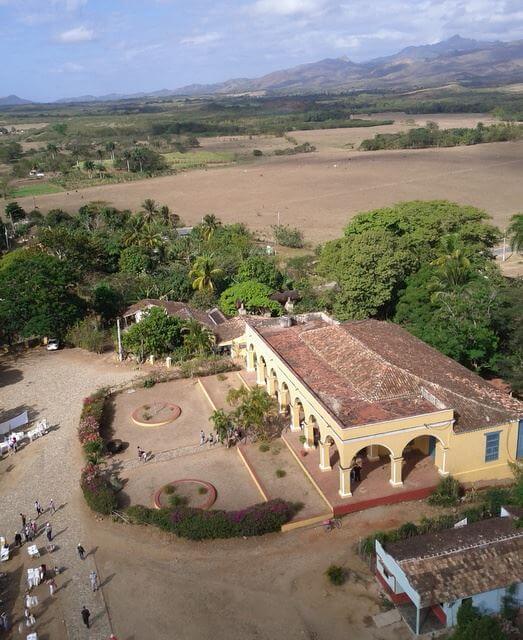
The main house of the Cuban sugar plantation
Climbing the tower is worth it for the views, but the ladders at the tapering top can get very narrow, and the passages very tight. I lazily stayed downstairs with the Canadians “to take pictures” whilst H climbed up to the top of the tower. It looked hard work but had I foreseen the lectures I’d get whilst waiting it I would have gone myself.
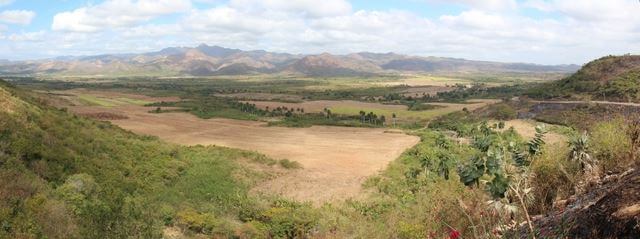
The view from the Valley de los Ingenios watchtower
Looking round and climbing the tower took under an hour, so a couple of restorative sugar cane juices later we took the taxi back to a viewpoint over the Valley due Los Ingenious. The building here had far more explanation of Cuba’s sugar problems.
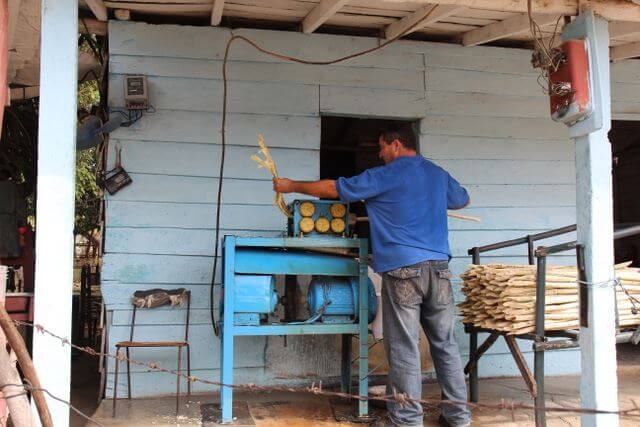
Making sugar cane juice in Cuba
UNESCO are trying to convince the Cubans to plant more sugar cane to make it look better. With more modern methods available elsewhere in the world, Cuba could no longer compete in the dwindling international sugar market, so they’re reticent to plant a purely decorative crop.
Our driver waited patiently and by 11am we were back in Trinidad. The train’s only scheduled return is at 2pm, getting back to Trinidad at 3pm, so had the train run we’d have been stuck there for another 3 hours with very little to do. The taxi may not have been quite such an experience as a steam train but our earlier misfortune had saved us both time and money.
If you still want to try the train it’s at Calle Antonio Guiteras Final, although I’d suggest ringing ahead to see if it’s running (tel. 41/99-3348).

